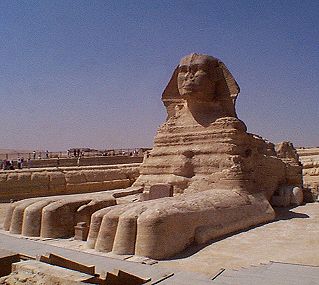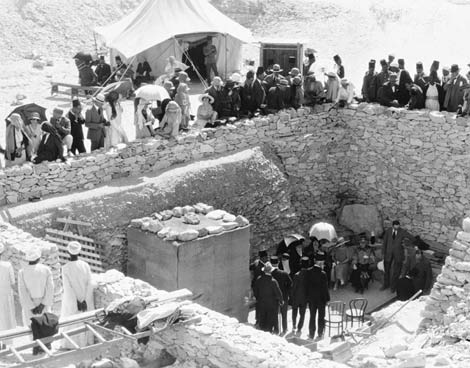
Alright, first up on the list, we have the mastabas. These structures were first built by Imhotep, who was basically the right hand man of the pharaoh Djoser, I believe. Anyway, he was the first Egyptian to build structures that would inspire others to build the pyramids. In Saqqara, there is a building made of 5 mastabas that are stacked on top of one another called a step pyramid, or a ziggurat. Its facade, or face, was made out of limestone, which, believe it or not, made the pyramid shine or glow because the sun reflected off of it.

The Pyramids of Giza are the most well known structures in the world and one of the seven wonders of the ancient world. These three pyramids were built as tombs for three pharaohs, Khufu, Khafre, and Menkaure. Next to Menkaure's pyramid are three smaller pyramids that serve as tombs for the queens. Khufu's pyramid, the one in the far back, has a base of 755' long. What's amazing is that the Egyptians were only a few inches off when they built his pyramid, but I digress. Khufu's pyramid was twice as tall as Djoser's, making it the largest at Giza, followed by Khafre and Menkaure, respectively.

The Sphinx was a hybrid of man and lion. This sphinx, modeled after Khafre's face, was built to protect the pyramids of Giza from tomb robbers. It is 240' long and 66' high, which actually surprised me, because it looks way bigger, but, again, I digress.

The Abu Simbel, the face of a temple depicting 4 statues of Ramses II, was carved in the face of a mountain. Later, in 1960, the entire mountain was moved 200' to higher ground, out of range of impending floodwater caused by a dam that had been built. Let's go back to "entire mountain" and "moved 200' to higher ground"...WHAT THE CRAP?! How did they do that?! Did they call in the Hulk...how?! I...I just...I don't even know.

King Tut's Tomb, as seen up above, is famous for the preservation of the artifacts inside. His tomb was one of the only tombs NOT robbed by tomb raiders. How many artifacts, you ask? It's OVER 9000!!! Just kidding, but seriously, there's over 5000 artifacts and also jars of honey, and also his body. I did not know this before, but honey cannot expire. Great...now I'm hungry.
Queen Nefertiti, famed as the most beautiful woman of her time, was given artistic prominence by King Akenaten, which was unheard of, because she was, well, a woman. She and Akenaten created a sun-cult.

The Colossi of Memnon, modelled after Amenhotep III, made moaning sounds at dawn and dusk. When the sun rose, the stones would expand due to the heat, while at dusk, the stones would contract from the loss of heat. The Egyptians believed that Memnon was greeting and bidding farewell to his mother, Eos the dawn goddess. At first I wanted to visit these statues...until I heard that in 200 AD, a Roman emperor "fixed them". After that, they stopped making those moaning sounds. That really bummed me out.
Moving on to their painting style, or canon of proportions. Their pictures were based on measurements of the figure fist...I don't know why, but just go with it. Their depiction of the human body at the frontal view was based on eyes and shoulders, while the profile was on the head, arms, and legs. They wanted to create an image that was recognizable as human.
That's all I got for now, though. See ya next time!
They didn't just call in the Hulk, they called in the Avengers and together through the power of box-office money they moved the mountain 200 feet.
ReplyDeleteNah actually they cut it up into little tiny chunks and then moved those and put it all back together again. Yup.
Ha!! Awesome post. Please double check: Imhotep wasn't the first architect of pyramids, they date earlier than him, but what about him was significant? Picture of Canon of Proportion would be good. Rosetta Stone?
ReplyDelete